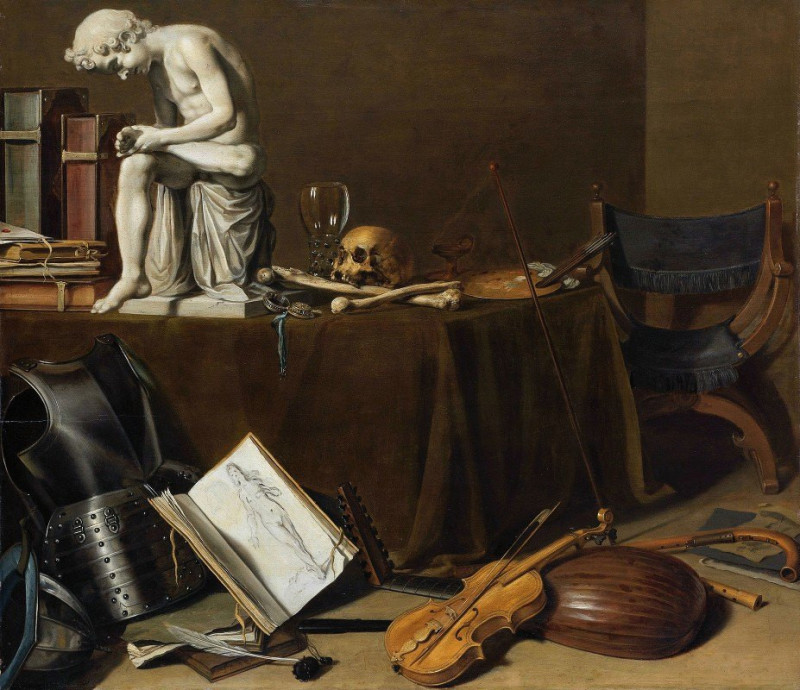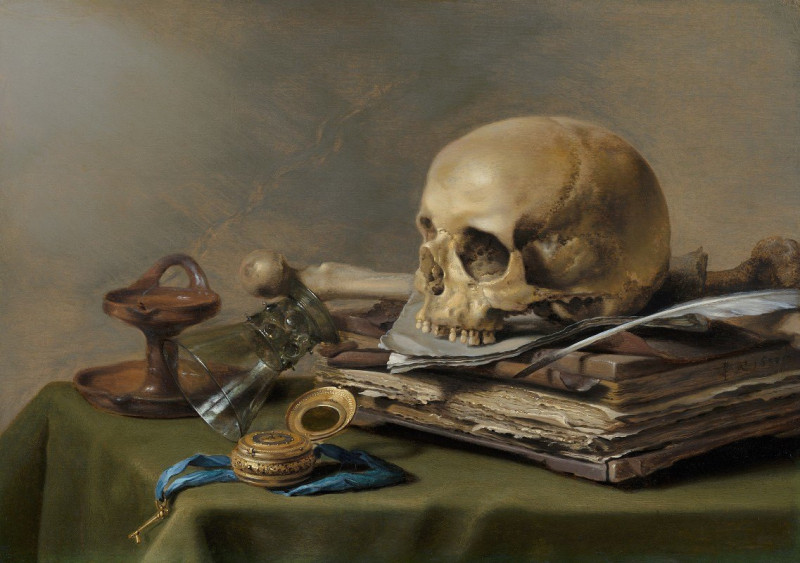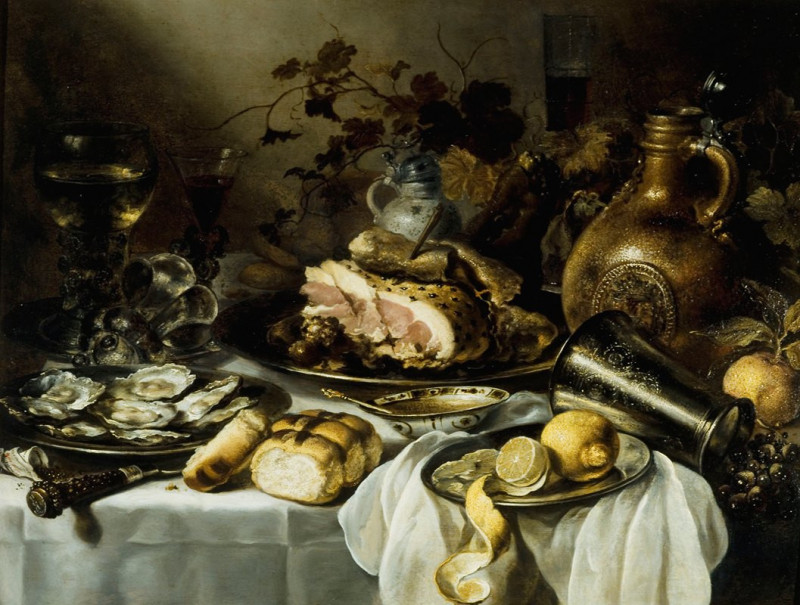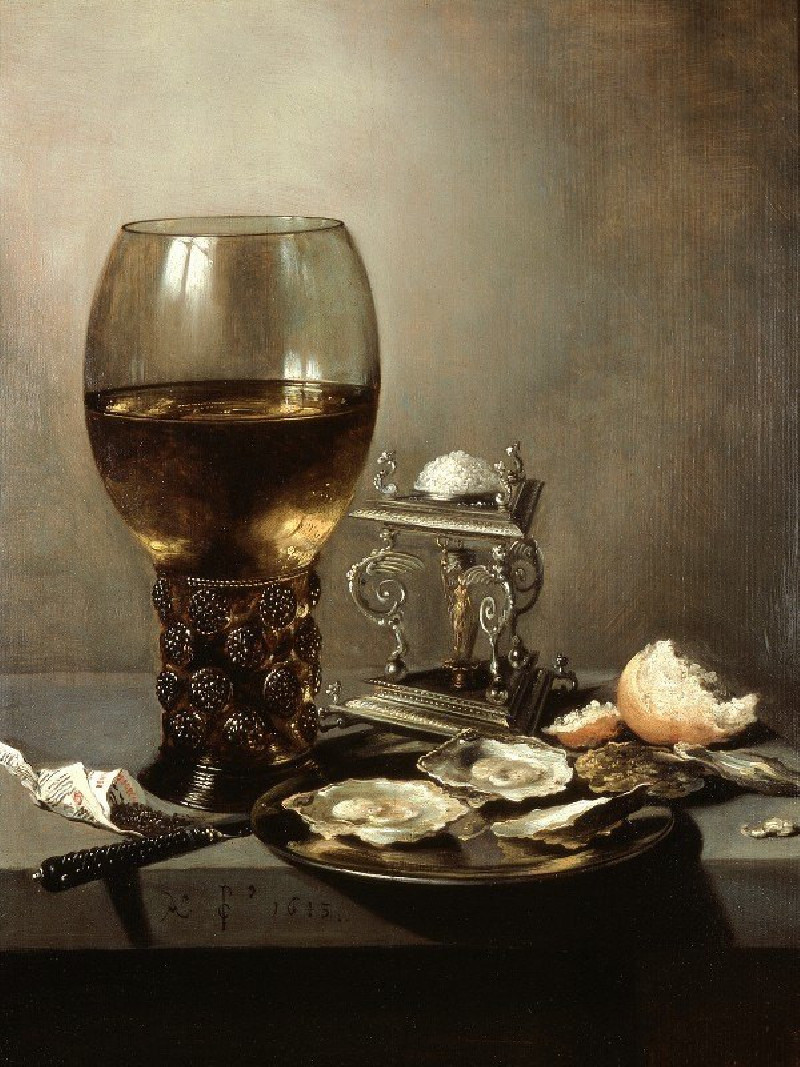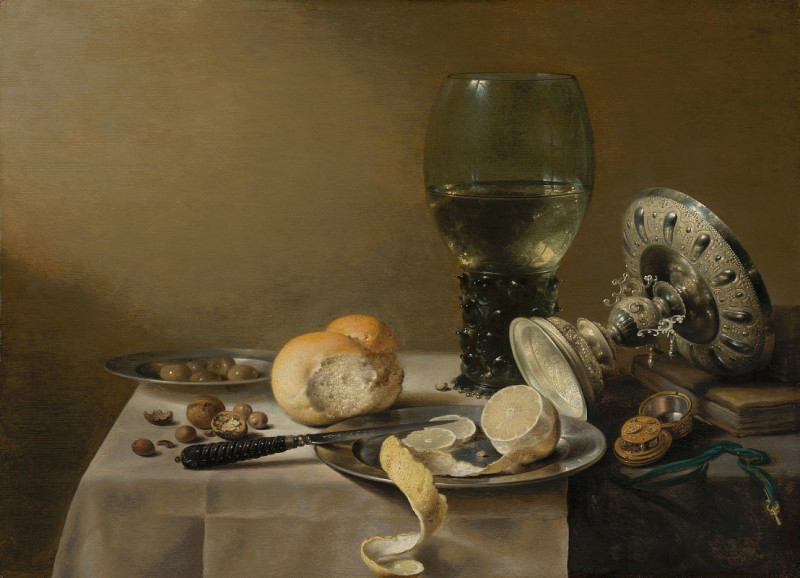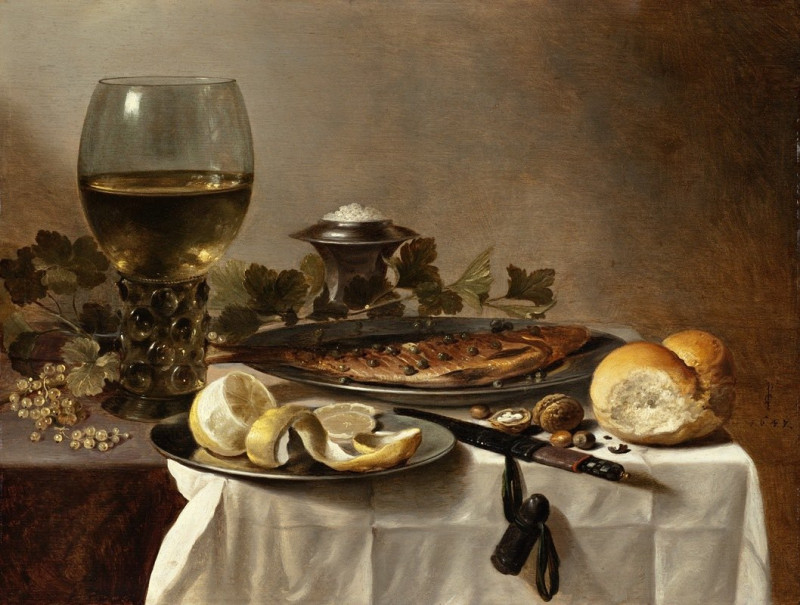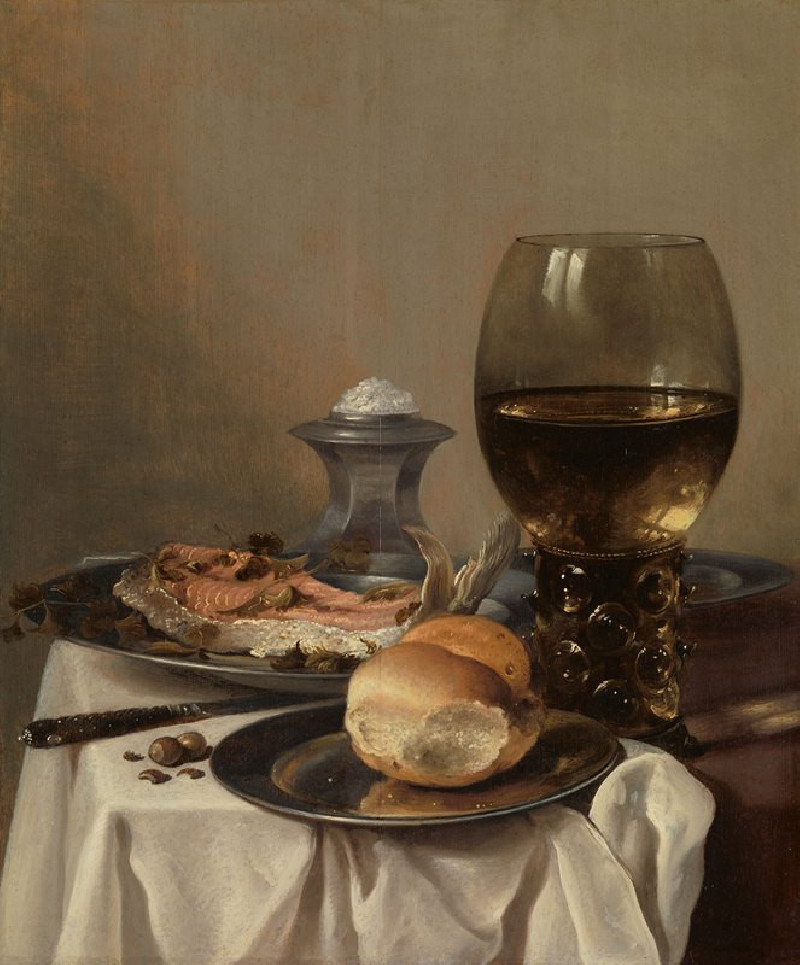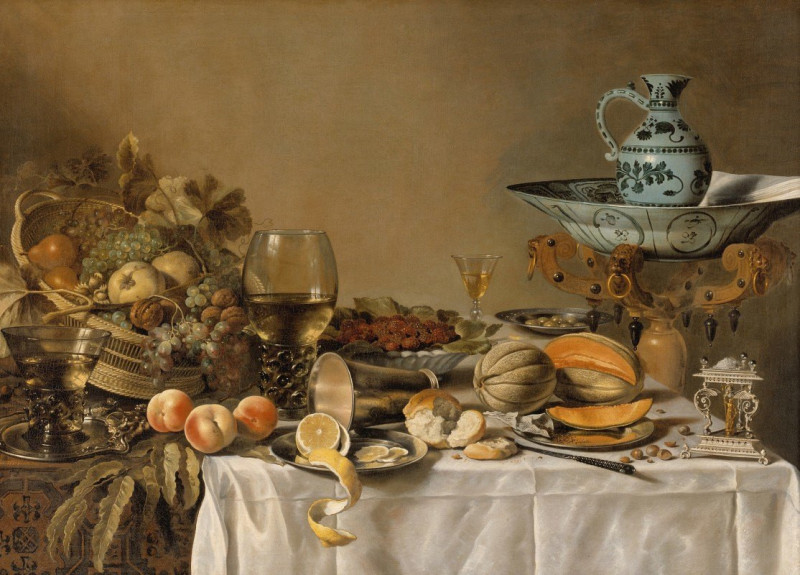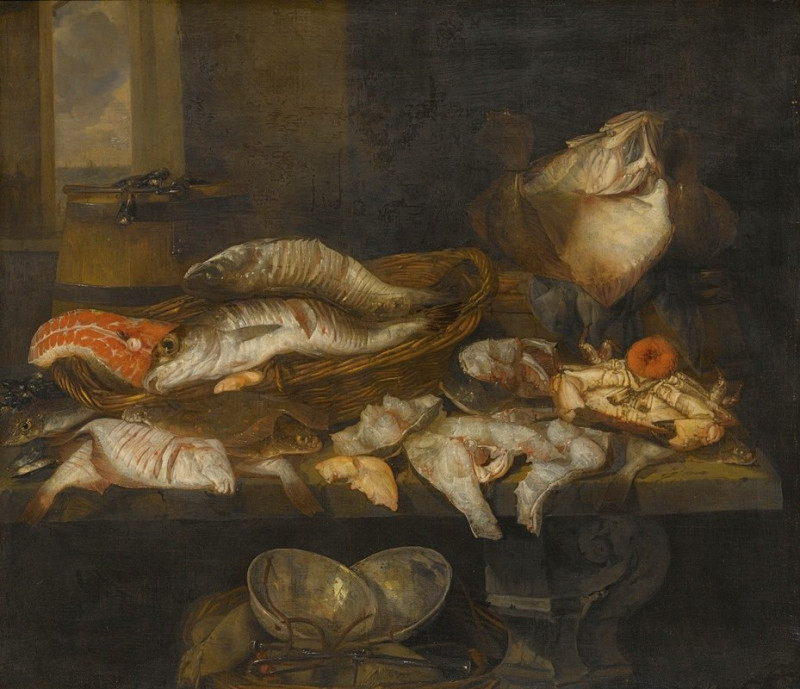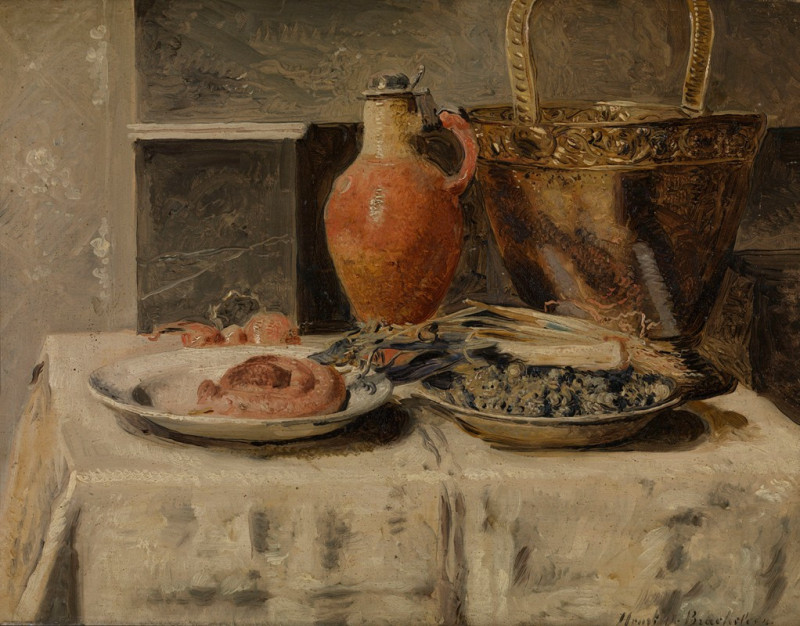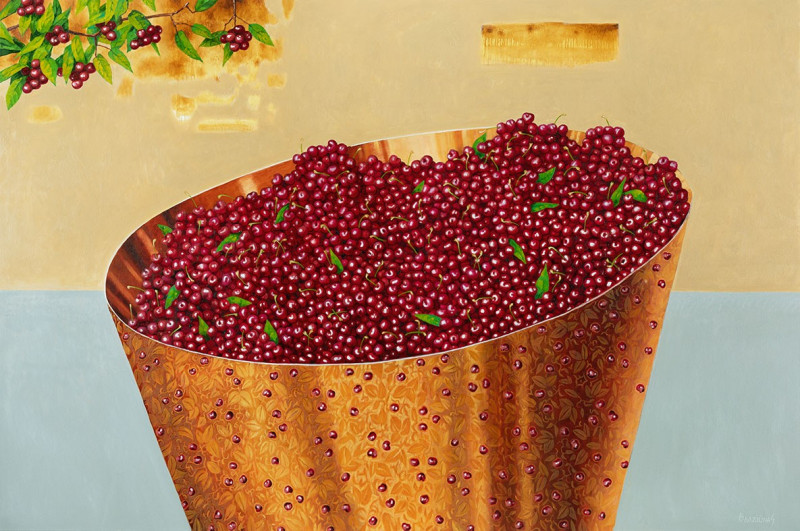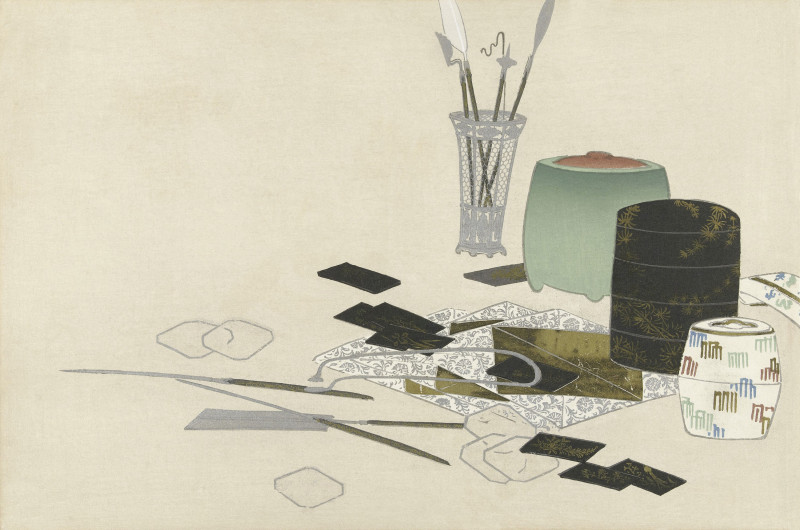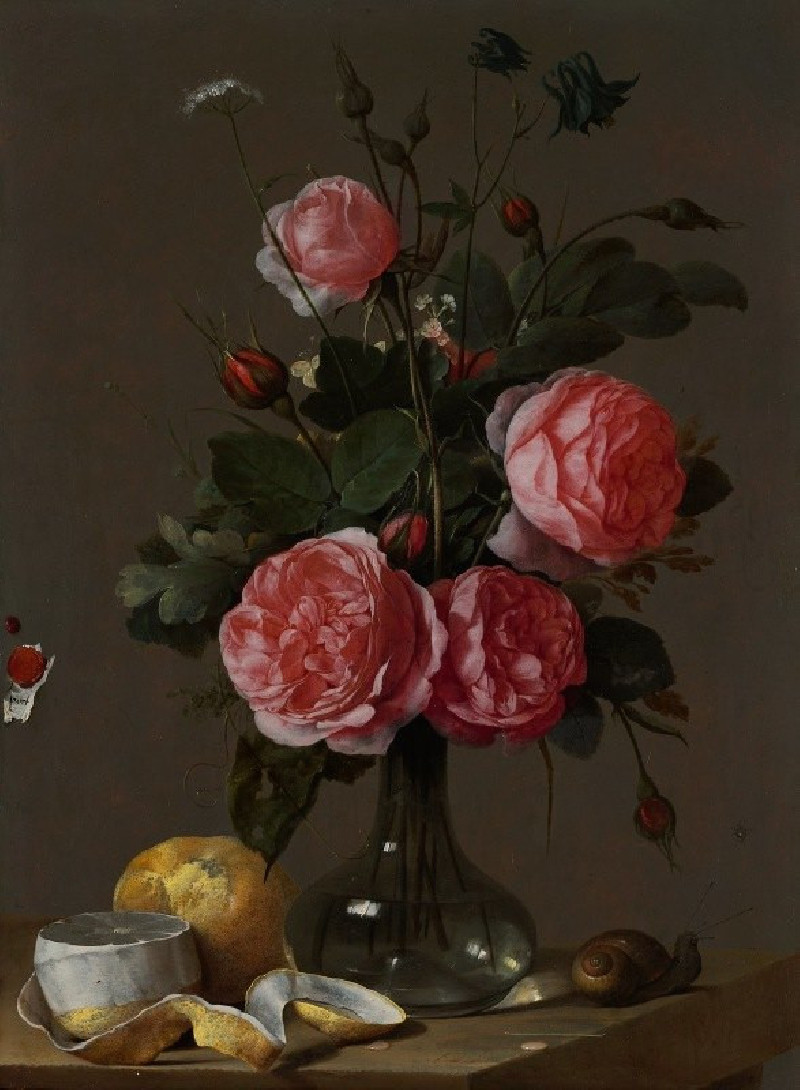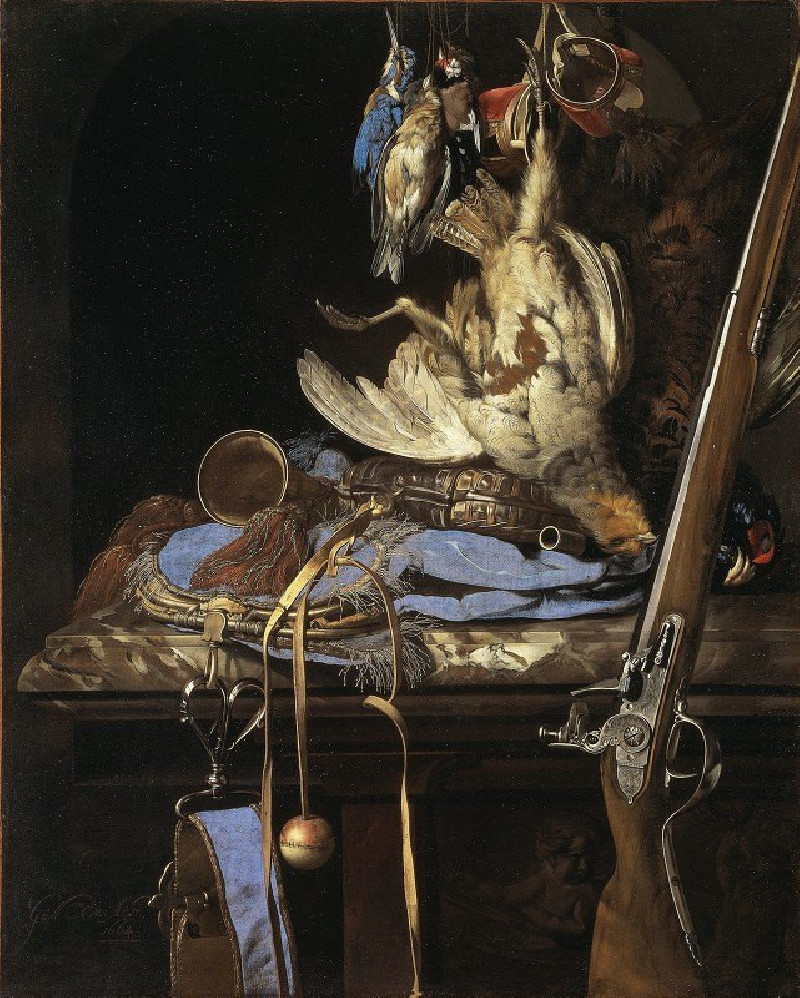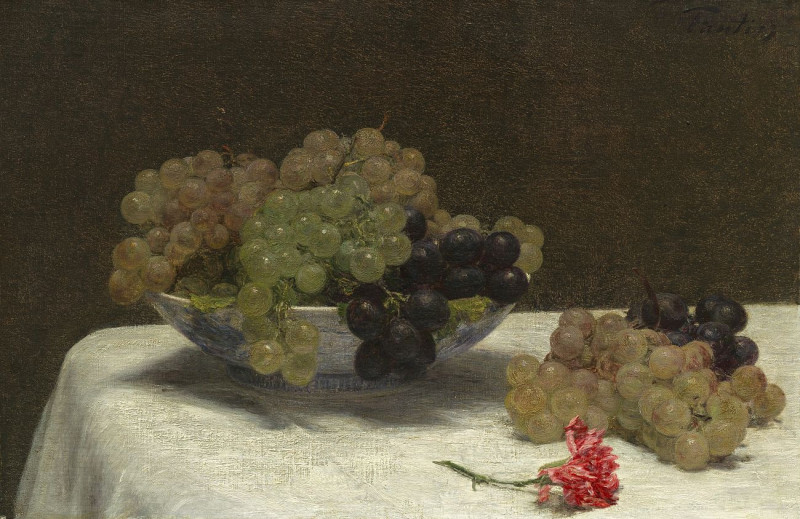Vanitas Still Life with the Spinario (1628)
Technique: Giclée quality print
Recommended by our customers
More about this artwork
Pieter Claesz's painting "Vanitas Still Life with the Spinario," created in 1628, is an exquisite example of the vanitas genre that flourished during the Dutch Golden Age. This painting serves as a meditation on the transient nature of worldly pleasures and the inevitability of death, encouraging viewers to consider the fragility of human life and the importance of spiritual wealth.At the center of the composition sits a marble statue of Spinario, a boy intently focused on removing a thorn from his foot. This classical figure symbolizes the distraction of earthly concerns. Surrounding him are symbols of human achievement and earthly pleasures that are ultimately overshadowed by the presence of death, represented here by a human skull and a bone.To the left, a lustrous suit of armor and an open book with a drawing of a classical figure underscore themes of power and knowledge, both of which are impotent in the face of mortality. On the right, musical instruments including a violin and a lute, alongside an artist's palette and brushes, symbolize the creative arts, suggesting the transient beauty and temporality of art and life.The inclusion of luxurious items such as books, a wine glass, and a globe further embellishes the theme, reminding viewers of the vanity of worldly ambitions and possessions. The dark, muted palette emphasizes the solemn message of the artwork, directing focus to the textured surfaces and skillful composition, which Pieter Claesz masterfully employs to convey deep philosophical content in this compelling visual form.
Delivery
Returns
Pieter Claesz was a Dutch Golden Age painter of still lifes.
He was born in Berchem, Belgium, near Antwerp, where he became a member of the Guild of St. Luke in 1620. He moved to Haarlem in 1620, where his son, the landscape painter Nicolaes Pieterszoon Berchem was born (October 1). He and Willem Claeszoon Heda, who also worked in Haarlem, were the most important exponents of the "ontbijt" or dinner piece.

